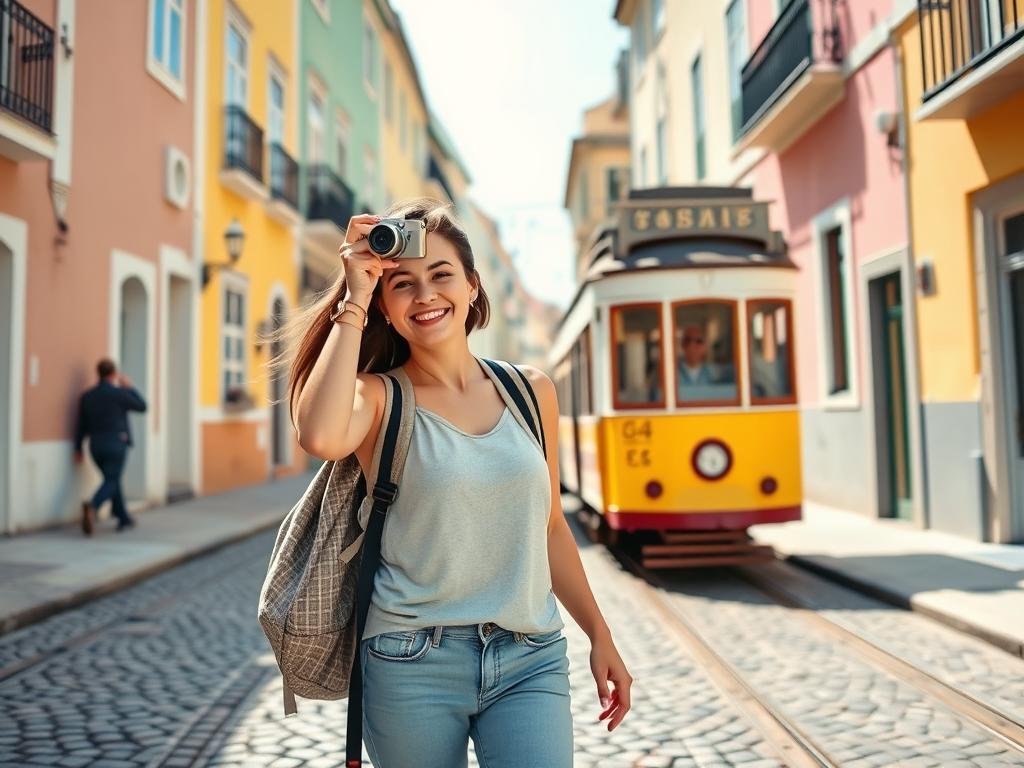Whether you’re planning your first solo adventure or you’re a seasoned traveler looking for updated insights for 2025, this comprehensive guide will equip you with everything you need to travel confidently, safely, and joyfully as a woman exploring the world on your own. From cutting-edge safety apps to cultural etiquette tips and budget-friendly destinations, we’ve got you covered.
Safety Tips for Solo Female Travelers in 2025
Safety remains the top concern for women traveling alone, but with proper preparation and awareness, solo travel can be both safe and incredibly rewarding. The landscape of travel safety is constantly evolving, with new technologies and resources making it easier than ever to stay secure while exploring the world.
Modern safety apps have transformed solo female travel in 2025
Pre-Trip Safety Planning
Before you even pack your bags, taking time for thorough safety planning can make all the difference in your solo travel experience. Start by researching your destination thoroughly, including local customs, common scams, safe neighborhoods, and areas to avoid. The landscape of travel safety is constantly changing, so make sure you’re getting the most current information.
Register with your country’s travel advisory service (like the Smart Traveler Enrollment Program for US citizens) to receive safety alerts and make it easier for your embassy to contact you in an emergency. Purchase comprehensive travel insurance that covers medical emergencies, evacuation, and trip cancellation—this is non-negotiable for solo travelers.
Create a detailed itinerary with your accommodation addresses, transportation details, and planned activities. Share this with trusted friends or family members, along with copies of your important documents (passport, visa, insurance information). Set up regular check-in times with someone back home so they know you’re safe.
Essential Tech Tools for Solo Female Travelers
Technology has revolutionized solo female travel safety in 2025. Location-sharing apps like Life360 and Find My Friends allow trusted contacts to track your movements in real-time. Personal safety apps such as bSafe, Noonlight, and the new TravelGuardian (launched in 2024) offer features like panic buttons, fake calls, and direct connections to local emergency services.
Invest in a reliable portable charger to ensure your devices never die when you need them most. Consider a backup phone or an international eSIM card for redundancy. The latest smartwatches now include safety features specifically designed for travelers, including fall detection, emergency SOS, and discreet alert systems.
Top Safety Apps for 2025
- TravelGuardian – AI-powered safety with local emergency services integration
- bSafe – Location tracking and emergency alerts
- Noonlight – One-touch panic button with 24/7 monitoring
- Tourlina – Connect with other female travelers
- Red Panic Button – Sends your location to emergency contacts
Situational Awareness Techniques
Developing strong situational awareness is perhaps the most valuable safety skill for solo female travelers. Always maintain awareness of your surroundings, especially in unfamiliar areas or at night. Walk confidently with purpose, even if you’re lost (you can always duck into a shop or cafe to check directions). Trust your intuition—if something feels wrong, remove yourself from the situation immediately.
Avoid appearing like a tourist by dressing appropriately for the local culture and keeping expensive cameras or electronics concealed when not in use. Research common scams in your destination and know how to recognize them. When using public transportation, sit near other women or families when possible, and avoid empty train cars or buses.
Learn a few key phrases in the local language, including how to ask for help or call the police. Consider taking a basic self-defense class before your trip to build confidence and learn practical techniques. Remember that appearing confident and aware is often your best deterrent against potential threats.
Get Your Free 2025 Solo Female Travel Safety Checklist
Download our comprehensive safety checklist with over 50 essential tips, app recommendations, and pre-trip planning steps to ensure your solo adventure is both safe and unforgettable.
Top 15 Solo Female Travel Destinations for 2025
The world is full of incredible destinations for solo female travelers, from bustling cities to serene natural landscapes. We’ve curated this list based on safety ratings, female-friendly infrastructure, ease of navigation, and the overall experience for women traveling alone. Whether you’re on a tight budget or looking to splurge, these destinations offer something for every type of solo traveler in 2025.
Budget-Friendly Destinations
Lisbon, Portugal
Portugal continues to be one of Europe’s most affordable and solo-friendly destinations. Lisbon offers charming cobblestone streets, excellent public transportation, and a thriving hostel scene perfect for meeting other travelers. The city’s compact size makes it easily walkable, while its vibrant café culture provides plenty of comfortable spaces for solo dining.
Budget tip: Purchase a Lisboa Card for free public transportation and discounted entry to major attractions.
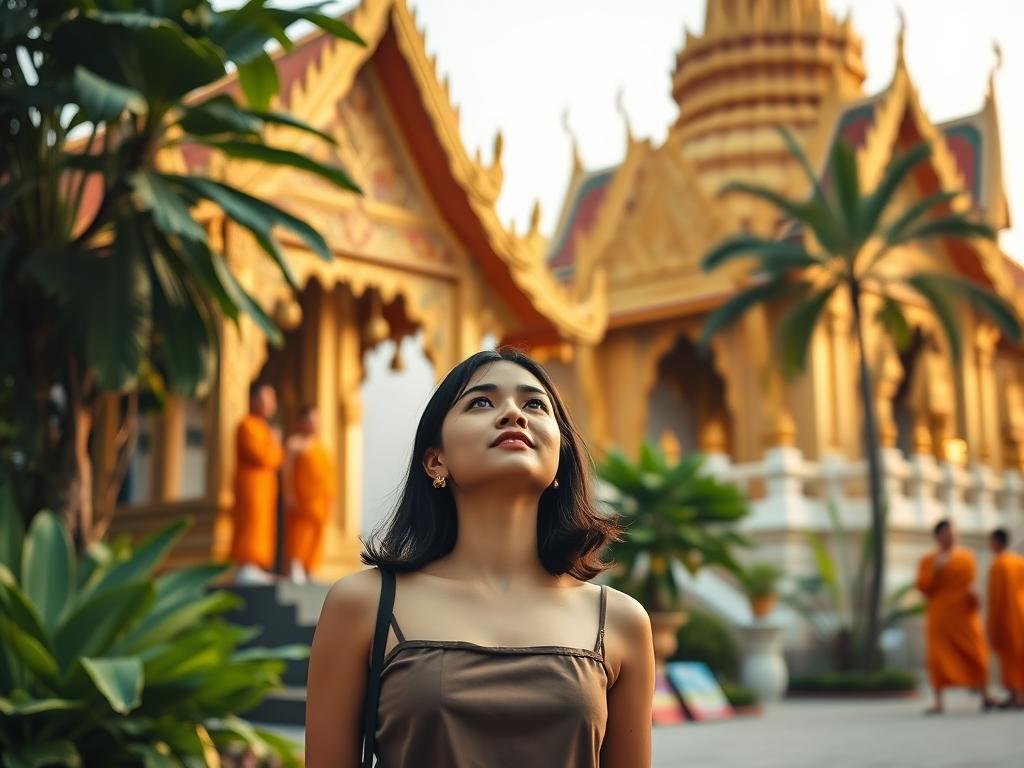
Chiang Mai, Thailand
This northern Thai city offers an ideal balance of cultural immersion and modern comforts at budget-friendly prices. Chiang Mai’s laid-back atmosphere, excellent food scene, and abundance of female-run businesses make it particularly welcoming for solo women. The city’s digital nomad community provides easy opportunities for connection.
Budget tip: Stay in the Old City area for walkable access to temples, markets, and affordable eateries.
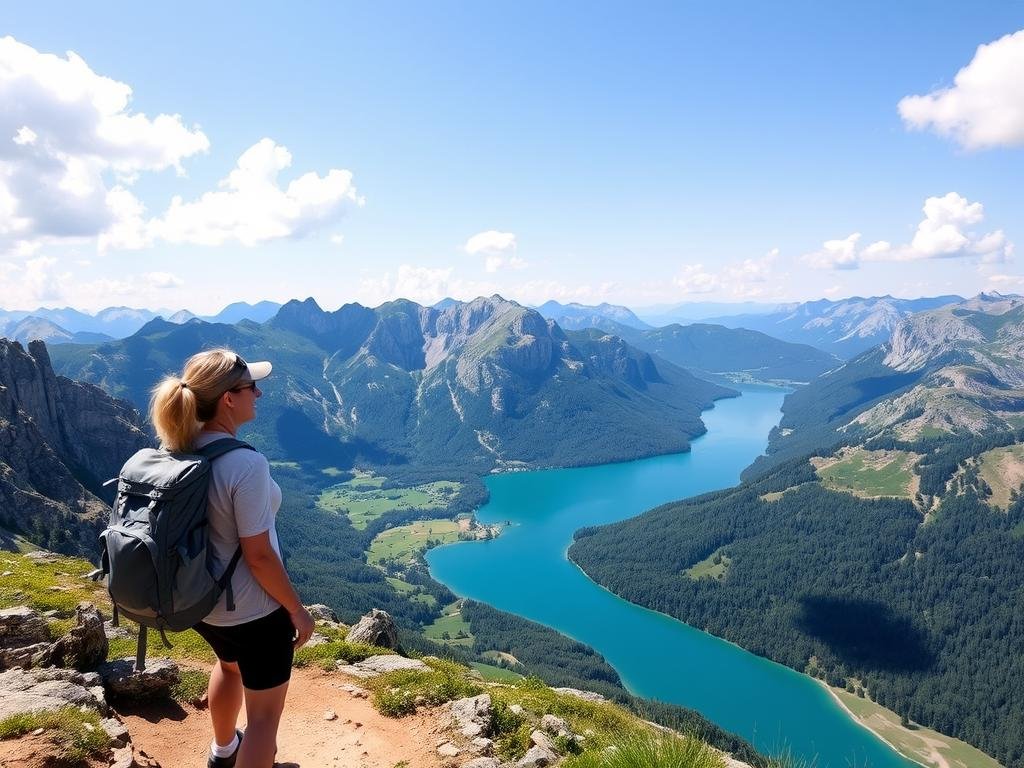
Slovenia
Often overlooked in favor of its more famous neighbors, Slovenia offers incredible value with its stunning alpine landscapes, charming capital Ljubljana, and picturesque Lake Bled. The country consistently ranks among Europe’s safest, with excellent public transportation connecting its compact territory. Slovenia’s emerging eco-tourism initiatives make it perfect for sustainable travelers.
Budget tip: The Slovenia Green Card offers discounts on sustainable tourism experiences throughout the country.
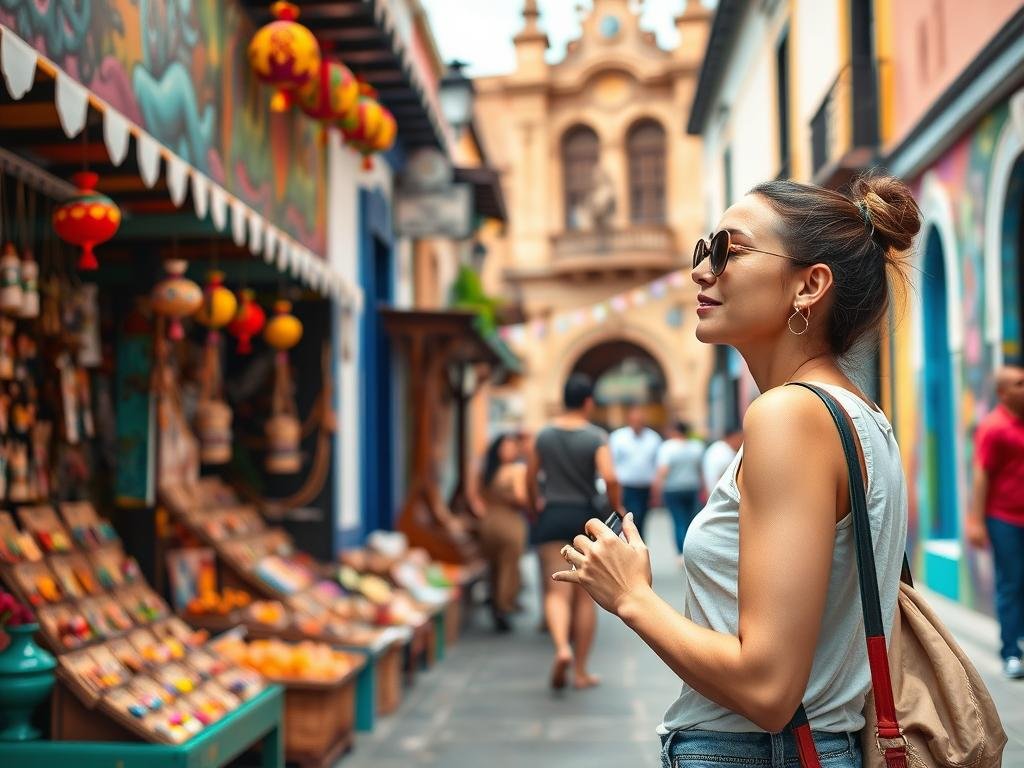
Mexico City, Mexico
Mexico’s capital has transformed into a cultural powerhouse with world-class museums, a renowned food scene, and vibrant neighborhoods like Roma and Condesa that are particularly solo-friendly. The city’s extensive metro system makes navigation easy, while free walking tours provide a safe way to explore and meet other travelers.
Budget tip: Visit museums on Sundays when many offer free entry to all visitors.
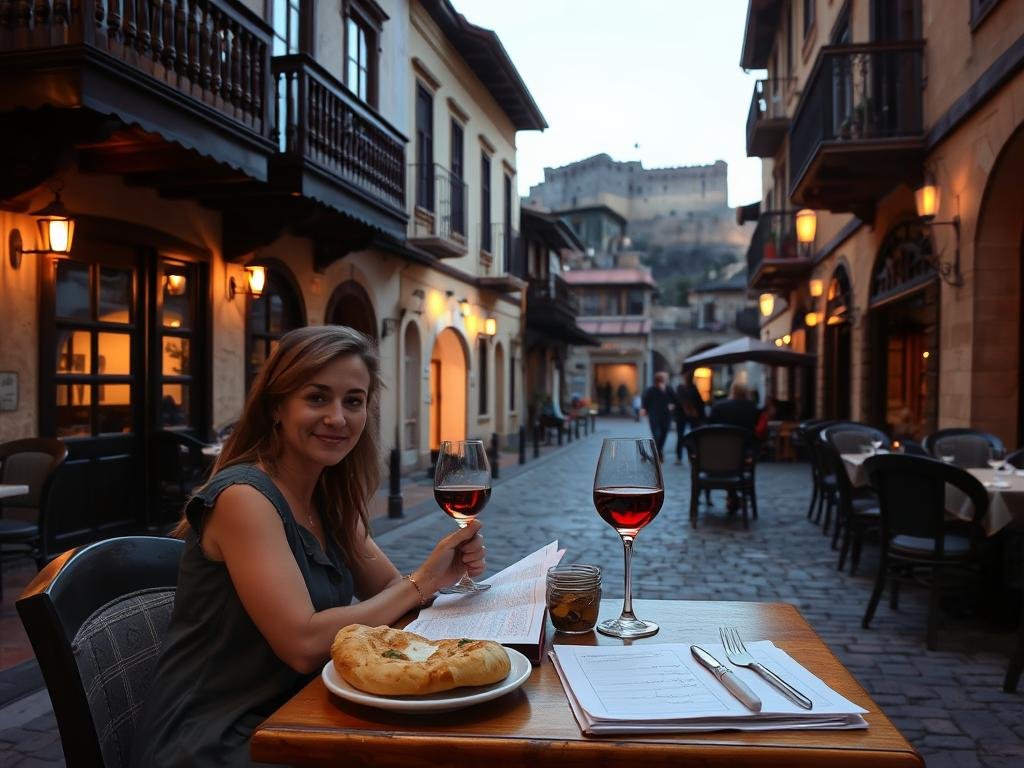
Tbilisi, Georgia
Georgia’s capital offers an intriguing blend of ancient history and cutting-edge culture at remarkably affordable prices. Tbilisi’s thermal baths, distinctive cuisine, and welcoming locals make it a refreshing alternative to more touristy European destinations. The country’s traditional hospitality culture means solo travelers are often welcomed with open arms.
Budget tip: Take the newly expanded night bus network for safe, affordable transportation after dark.
Mid-Range Destinations
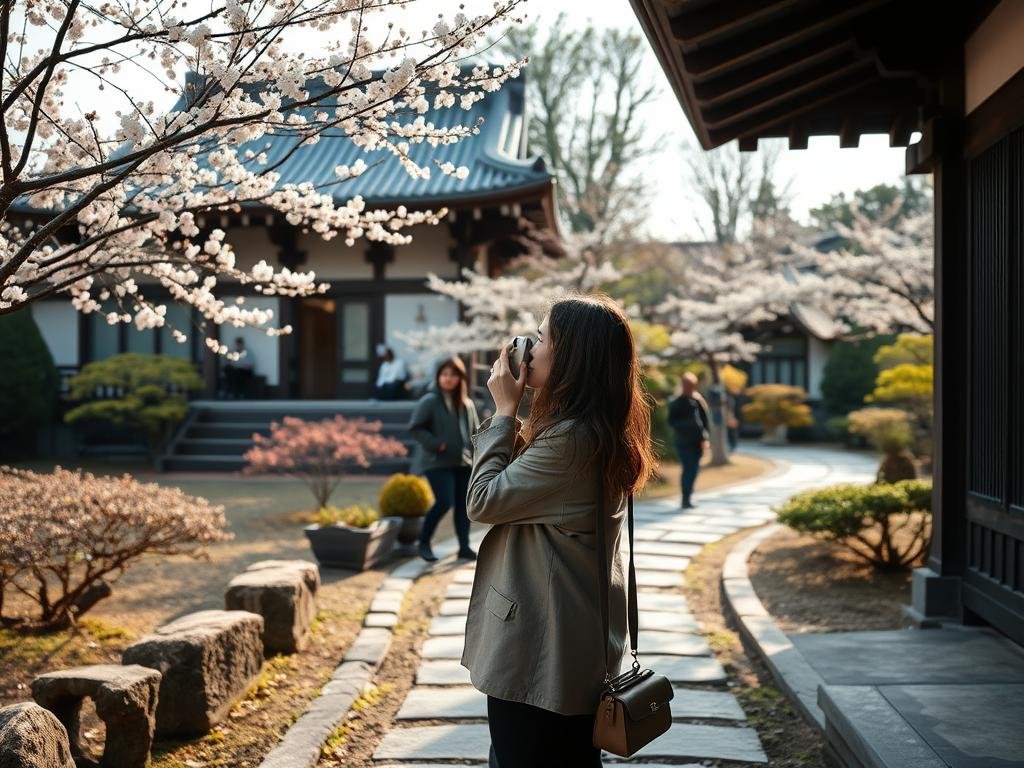
Kyoto, Japan
Japan consistently ranks among the safest countries for solo female travelers, and Kyoto offers the perfect blend of traditional culture and modern convenience. The city’s efficient public transportation, respectful culture, and abundance of solo-friendly dining options make it ideal for women traveling alone. Kyoto’s numerous temples and gardens provide peaceful spaces for reflection.
Mid-range tip: Stay in a traditional ryokan for an authentic Japanese experience with the privacy and comfort solo travelers appreciate.
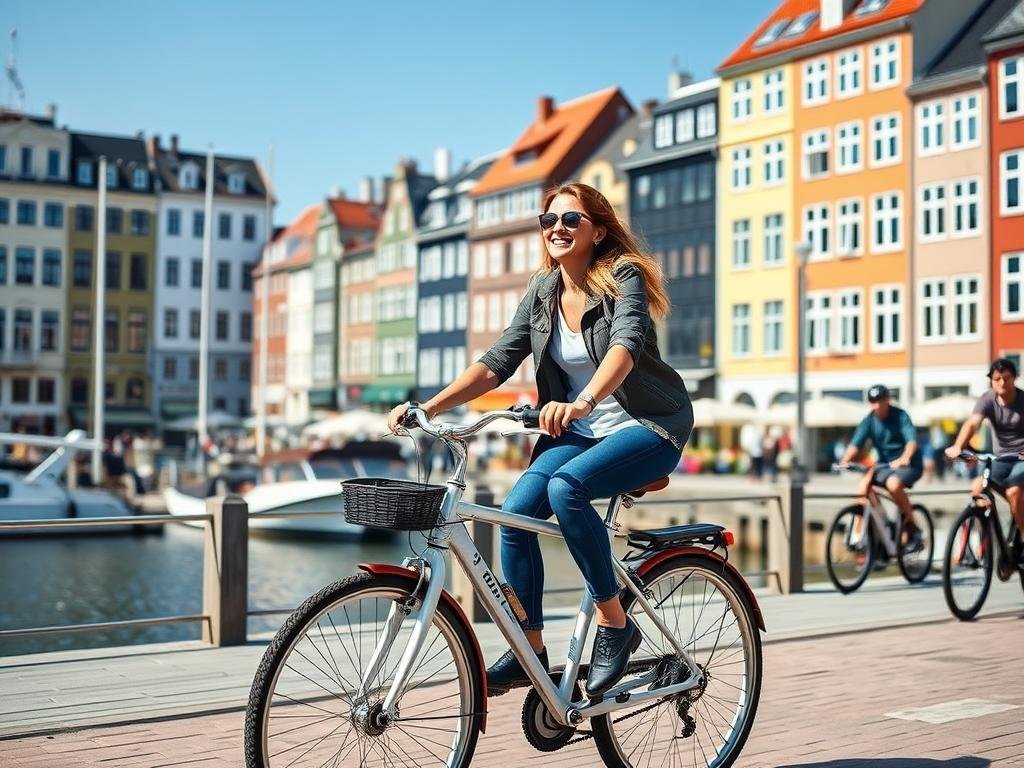
Copenhagen, Denmark
The Danish capital exemplifies Scandinavian safety and efficiency with the added bonus of cutting-edge design, exceptional public spaces, and a thriving food scene. Copenhagen’s compact size and extensive cycling infrastructure make it easy to navigate, while its café culture provides comfortable spaces for solo travelers to relax and people-watch.
Mid-range tip: Rent a bike to explore like a local—Copenhagen’s dedicated cycling lanes make this the safest and most enjoyable way to see the city.
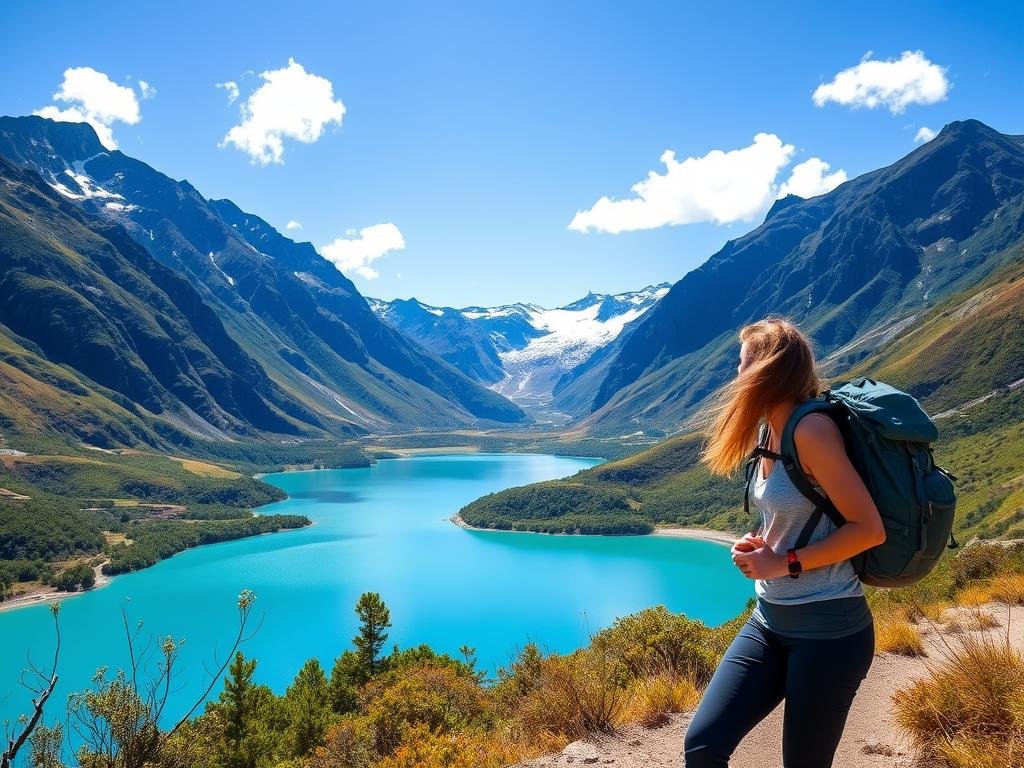
New Zealand
New Zealand remains a gold standard for solo female travelers seeking outdoor adventure in a safe environment. The country’s well-developed tourism infrastructure, English-speaking population, and spectacular landscapes make it ideal for first-time solo travelers. The abundance of group activities and tours makes it easy to meet others while maintaining independence.
Mid-range tip: Consider a flexible hop-on-hop-off bus pass to maximize your exploration while meeting other travelers.
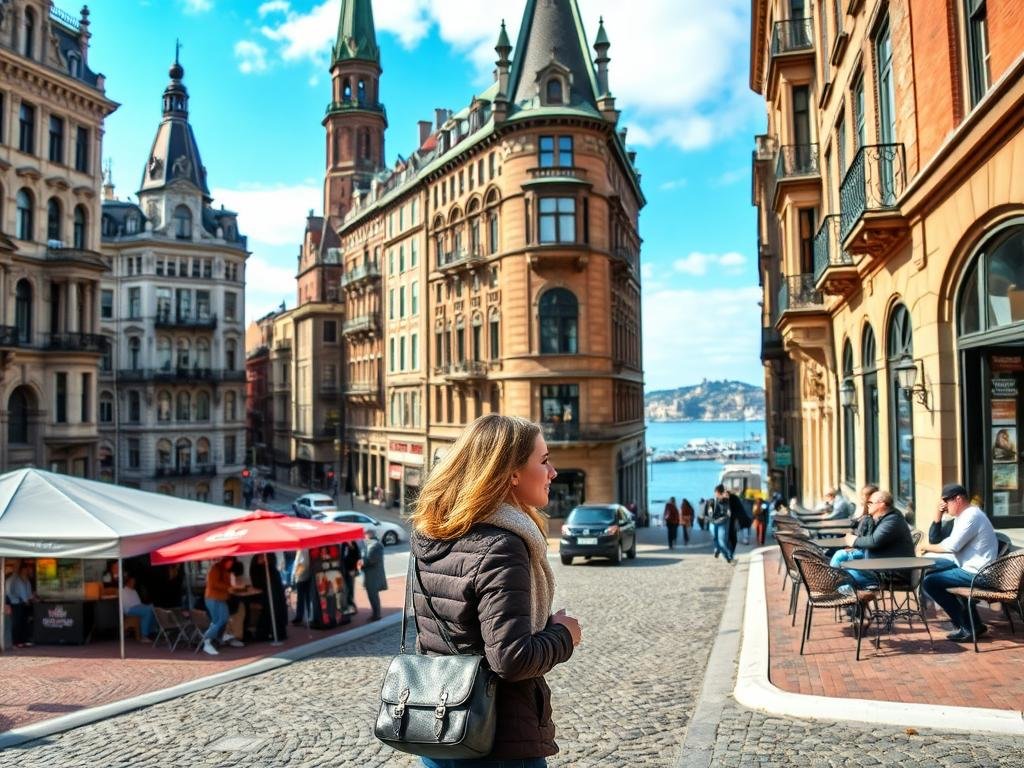
Montreal, Canada
Montreal offers European charm with North American convenience, all in a city known for its safety and inclusivity. The city’s vibrant arts scene, distinctive neighborhoods, and world-class food make it perfect for cultural exploration. Montreal’s festival calendar ensures there’s always something happening, providing natural opportunities to meet locals and other travelers.
Mid-range tip: Visit during one of Montreal’s many festivals for built-in social opportunities and special events.
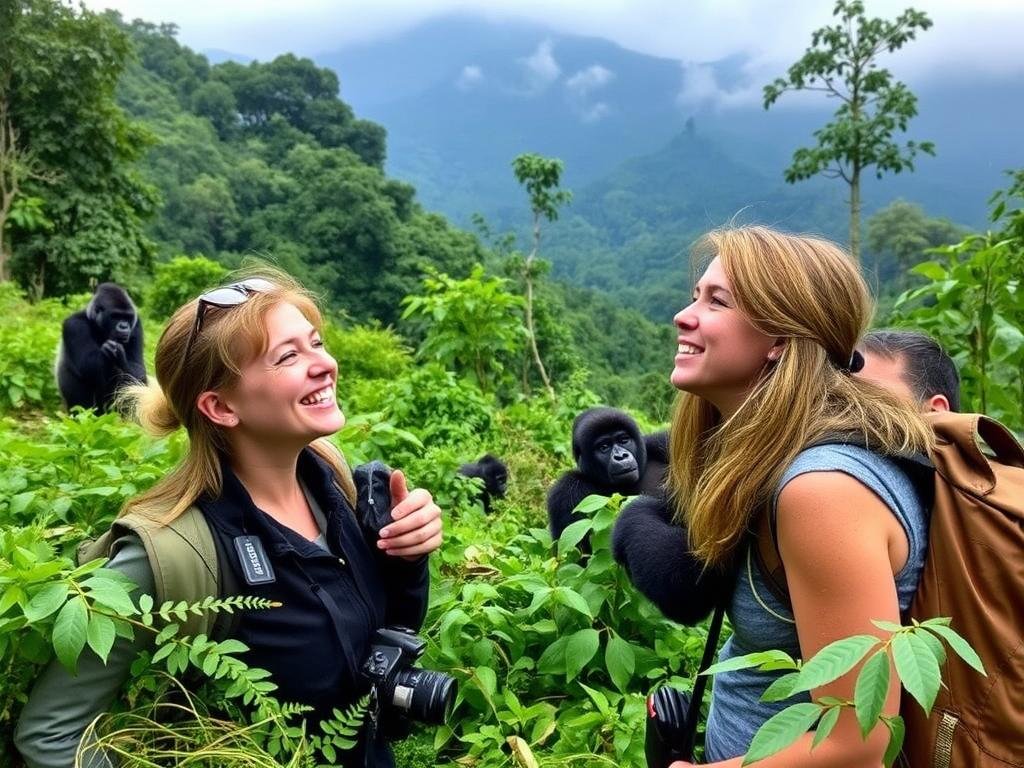
Rwanda
Rwanda has emerged as Africa’s safest destination for solo female travelers, offering incredible wildlife experiences, stunning landscapes, and exceptionally clean, well-organized cities. The country’s commitment to conservation and sustainable tourism creates meaningful travel experiences, while its rapid development has resulted in good infrastructure and connectivity.
Mid-range tip: Join a community-based tourism initiative to support local women’s cooperatives while gaining authentic cultural insights.
Luxury Destinations
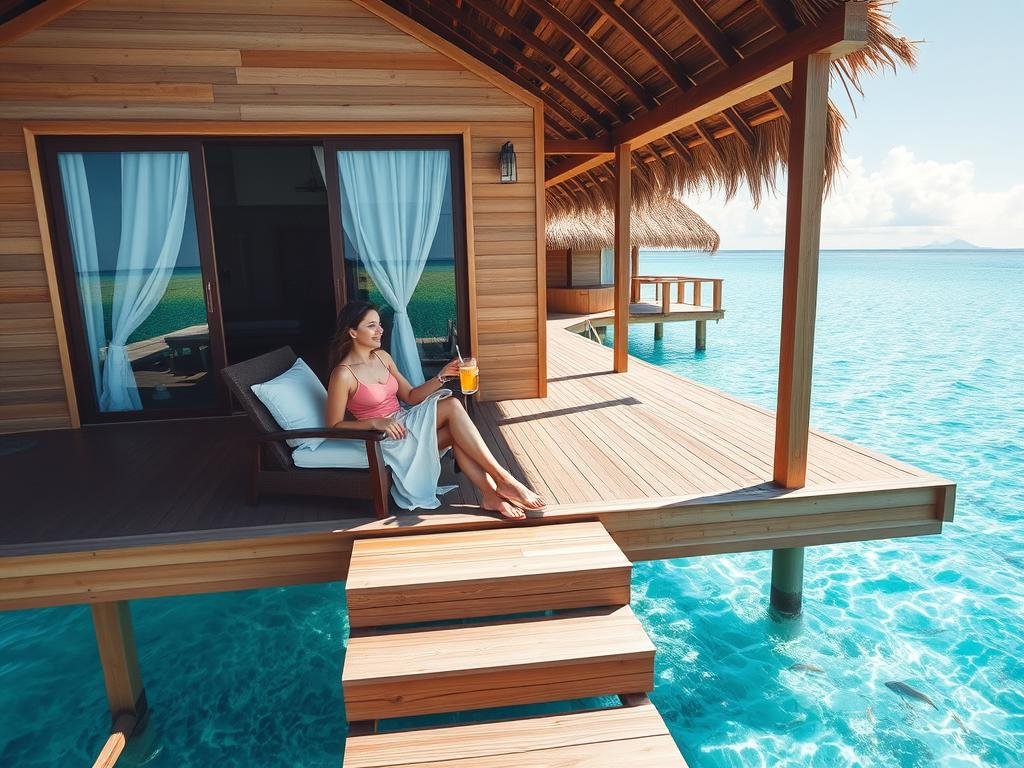
Maldives
Once primarily a honeymoon destination, the Maldives has evolved to welcome solo travelers seeking luxury and tranquility. Many resorts now offer solo packages with dedicated wellness programs, diving experiences, and communal dining options. The controlled environment of private island resorts provides both safety and serenity for women traveling alone.
Luxury tip: Choose resorts that offer communal dining tables or solo traveler activities to balance privacy with opportunities for connection.
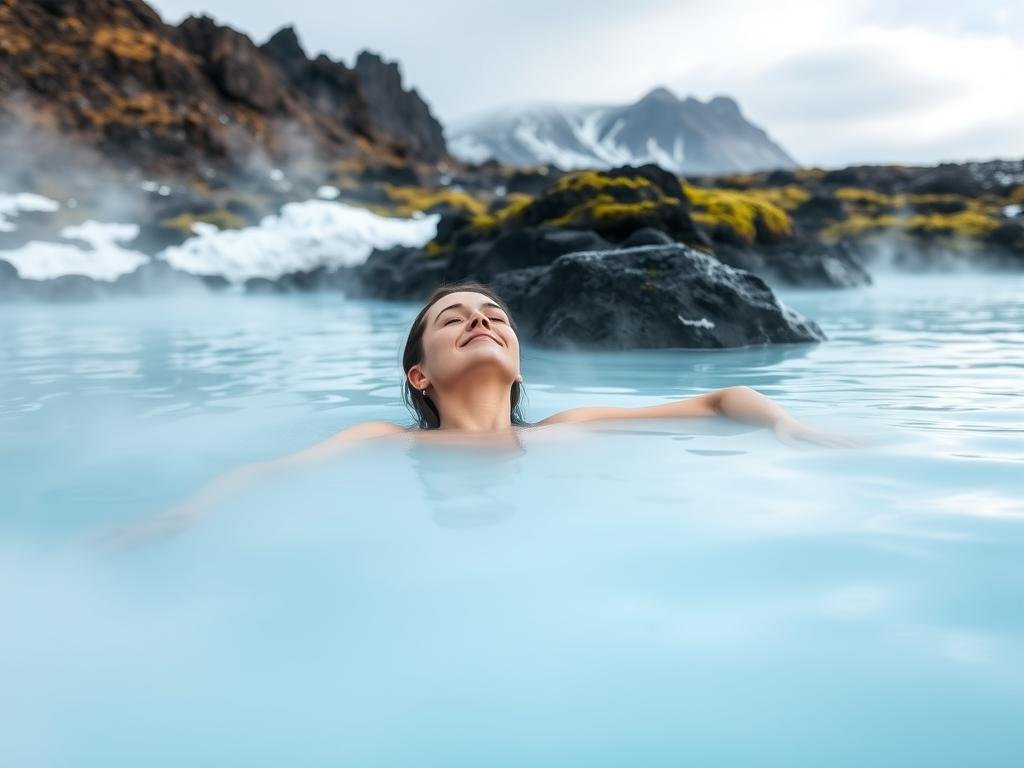
Iceland
Iceland combines otherworldly landscapes with the world’s highest safety ratings, making it perfect for solo luxury travel. The country’s geothermal spas, exclusive wilderness lodges, and private guided experiences offer indulgent ways to experience its natural wonders. Iceland’s midnight sun in summer and northern lights in winter create magical settings for solo reflection.
Luxury tip: Book a private guide and super-jeep tour to access remote highlands and glaciers not reachable by regular vehicles.
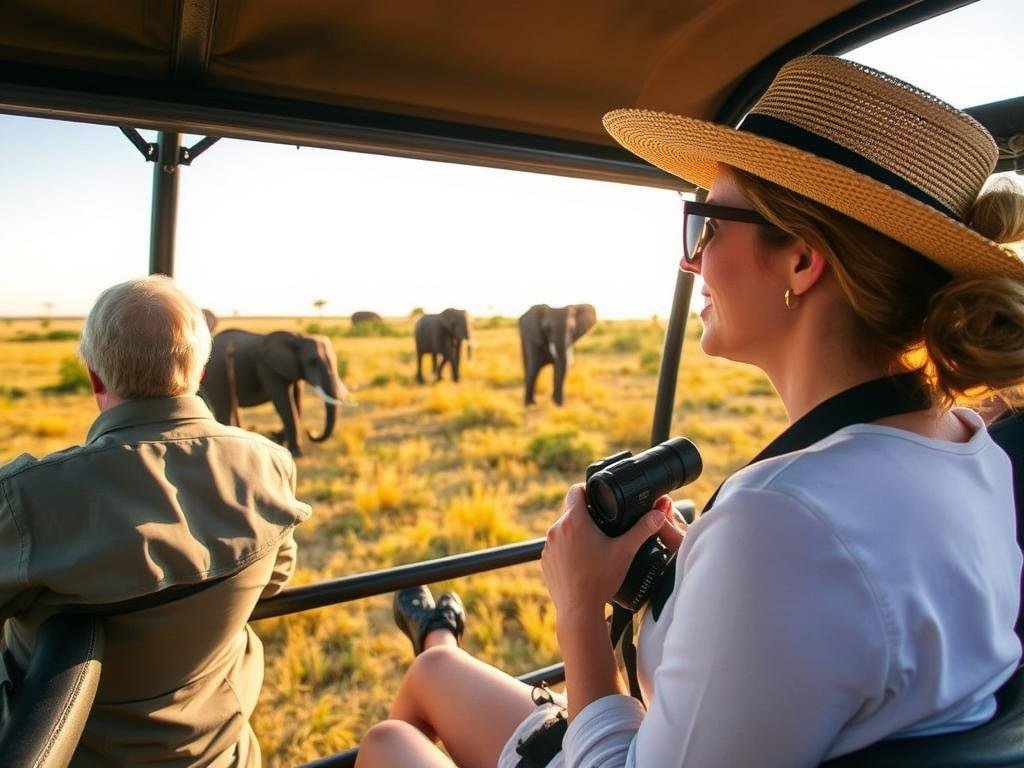
Botswana
Botswana’s approach to high-value, low-impact tourism creates an exclusive safari experience that’s ideal for solo luxury travelers. The country’s political stability and conservation focus ensure both safety and exceptional wildlife viewing. Intimate luxury camps often host communal dinners where solo travelers can share the day’s adventures with like-minded guests.
Luxury tip: Choose camps that don’t charge single supplements during shoulder seasons for significant savings without compromising the experience.

Singapore
Singapore offers unparalleled safety combined with world-class luxury experiences, from Michelin-starred hawker stalls to exclusive rooftop bars. The city-state’s efficient public transportation, strict laws, and English-speaking population make it exceptionally easy to navigate as a solo traveler. Singapore’s position as a hub makes it perfect for combining with other Southeast Asian destinations.
Luxury tip: Book a room at Marina Bay Sands for access to its iconic rooftop infinity pool—a splurge that’s especially worth it for solo travelers seeking that perfect Singapore photo.
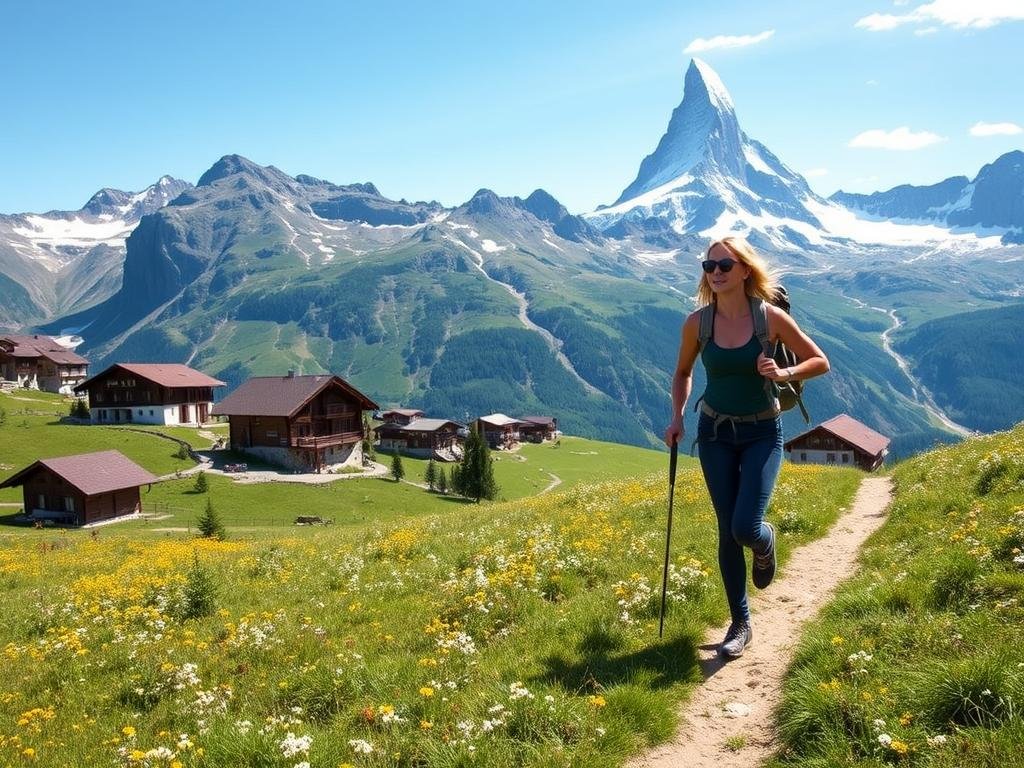
Switzerland
Switzerland combines impeccable safety with breathtaking alpine scenery and world-class wellness experiences. The country’s legendary public transportation system makes it easy to access remote mountain villages and luxurious lakeside retreats. Switzerland’s reputation for neutrality and order creates an environment where solo female travelers can completely relax.
Luxury tip: Splurge on a first-class Swiss Travel Pass for panoramic train journeys through the Alps with dedicated viewing cars and premium service.
Plan Your Perfect Solo Adventure
Get our detailed destination guides with female-friendly accommodations, local safety tips, and insider recommendations for each of these amazing locations.
Budgeting Strategies for Solo Female Travelers
One of the biggest challenges of solo travel is managing costs without a travel companion to share expenses. However, with strategic planning and the right tools, solo female travel can be financially accessible regardless of your budget. The key is finding the right balance between saving money and investing in experiences and services that enhance your safety and enjoyment.
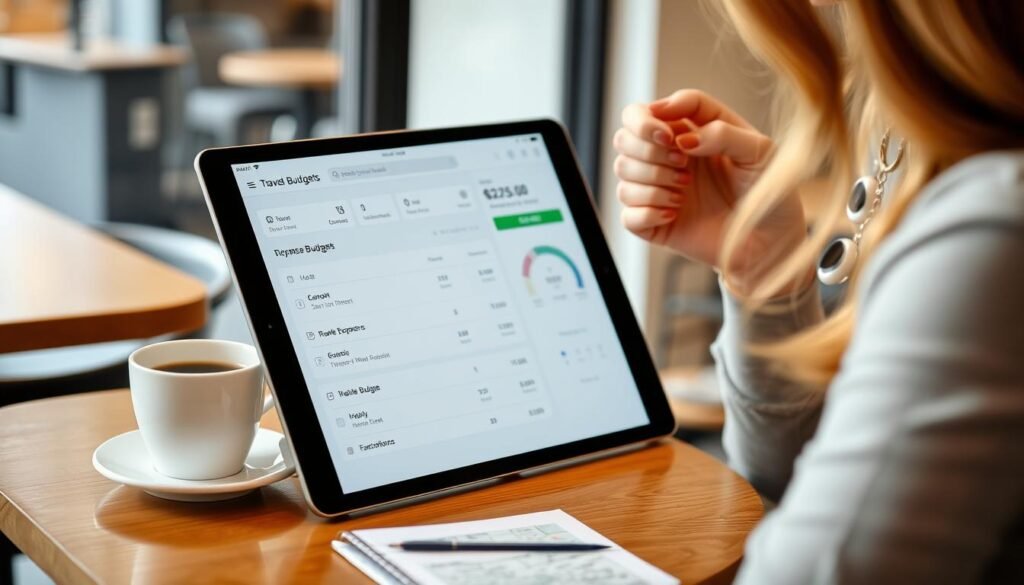
Digital tools have made travel budgeting more accessible than ever
Understanding Currency Fluctuations and Economic Trends
The global economic landscape is constantly shifting, creating both challenges and opportunities for budget-conscious travelers. For 2025, keep an eye on emerging destinations where your currency may have favorable exchange rates. Countries experiencing economic recovery often offer excellent value before tourism fully rebounds and prices increase.
Consider setting up currency alerts through apps like XE or Wise to notify you when exchange rates are favorable for your destination. For longer trips, consider splitting your currency exchanges rather than converting all your money at once, allowing you to take advantage of rate fluctuations.
Research seasonal economic patterns in your destination—many places have significant price differences between high and shoulder seasons, with minimal differences in weather or experience quality. The new “workation” trend has also shifted traditional high seasons in many destinations, creating new opportunities for value in previously peak periods.
Essential Budgeting Apps and Tools
Technology has revolutionized travel budgeting, with specialized apps making it easier than ever to track expenses, split costs, and manage money across currencies. Apps like Trail Wallet and TravelSpend are designed specifically for travelers, allowing you to set daily budgets, categorize expenses, and track spending patterns across multiple currencies.
For banking, consider travel-friendly options like Wise, Revolut, or N26 that offer multi-currency accounts, minimal foreign transaction fees, and competitive exchange rates. Many now include features specifically designed for solo travelers, such as virtual cards for online bookings and enhanced security controls.
Use price comparison tools like Skyscanner’s “Everywhere” search or Hopper’s price prediction technology to identify the most affordable destinations and travel dates. For accommodations, sites like Hostelworld and Booking.com allow you to filter specifically for solo-friendly options and female-only dorms.
Top Budgeting Apps for Solo Female Travelers
- Trail Wallet – Designed specifically for travelers with offline functionality
- TravelSpend – Great for long-term travel with detailed analytics
- Wise – Multi-currency account with excellent exchange rates
- Revolut – Virtual cards and spending controls for security
- Splitwise – Helpful for tracking expenses when you meet travel companions
Sustainable Spending Strategies
Sustainable travel isn’t just about environmental impact—it’s also about creating a financially sustainable approach to seeing the world. Consider adopting a value-based budgeting approach, where you identify the experiences that matter most to you and allocate your funds accordingly. For many solo female travelers, investing in secure accommodations and safe transportation is worth cutting back in other areas.
Look for opportunities to trade skills for accommodations or experiences through platforms like Worldpackers or Workaway, which have enhanced safety verification processes for solo female travelers. Many hostels offer reduced or free stays in exchange for a few hours of work daily, providing both savings and built-in community.
Consider slow travel as both a sustainability practice and a budget strategy. Staying longer in fewer places reduces transportation costs, often unlocks weekly or monthly accommodation discounts, and allows you to develop money-saving local knowledge. This approach also typically creates more meaningful connections with places and people.
| Expense Category | Budget Strategy | Safety Consideration |
| Accommodation | Female-only dorms, weekly discounts, housesitting | Worth spending more for secure locations and properties with 24/7 reception |
| Transportation | Public transit passes, walking in walkable cities | Rideshares after dark may be worth the extra cost |
| Food | Local markets, street food, occasional cooking | Research safe street food areas; budget for some restaurant meals |
| Activities | Free walking tours, museum discount days | Group tours can provide both safety and social opportunities |
| Technology | Local SIM cards, offline maps | Always budget for reliable connectivity and backup power |
Solo-Specific Savings Tips
As a solo traveler, you’ll face unique financial challenges, particularly the dreaded “single supplement” charged by many tours and accommodations. Look for tour companies like Intrepid and G Adventures that offer roommate matching or waived single supplements on select departures. Some cruise lines and resorts now offer solo cabins or rooms specifically designed (and priced) for individual travelers.
Take advantage of the flexibility solo travel offers by booking last-minute deals that wouldn’t work for larger groups. Many hotels and tours offer significant discounts to fill empty spaces, and as a solo traveler, you only need to find one opening. Apps like HotelTonight and Secret Flying can alert you to these opportunities.
Consider joining travel membership programs that offer special benefits for solo travelers. Many hotel loyalty programs provide enhanced security features for solo guests, while airline programs may offer priority boarding that gives you more time to settle in and secure your belongings. The initial investment in these programs often pays off in both savings and peace of mind.
Cultural Etiquette Guide for Solo Female Travelers
Understanding and respecting local customs is essential for any traveler, but it takes on additional importance for women traveling alone. Cultural awareness not only enriches your travel experience but also helps you navigate social situations safely and respectfully. As a solo female traveler, being informed about local expectations can help you avoid unwanted attention and potential misunderstandings.
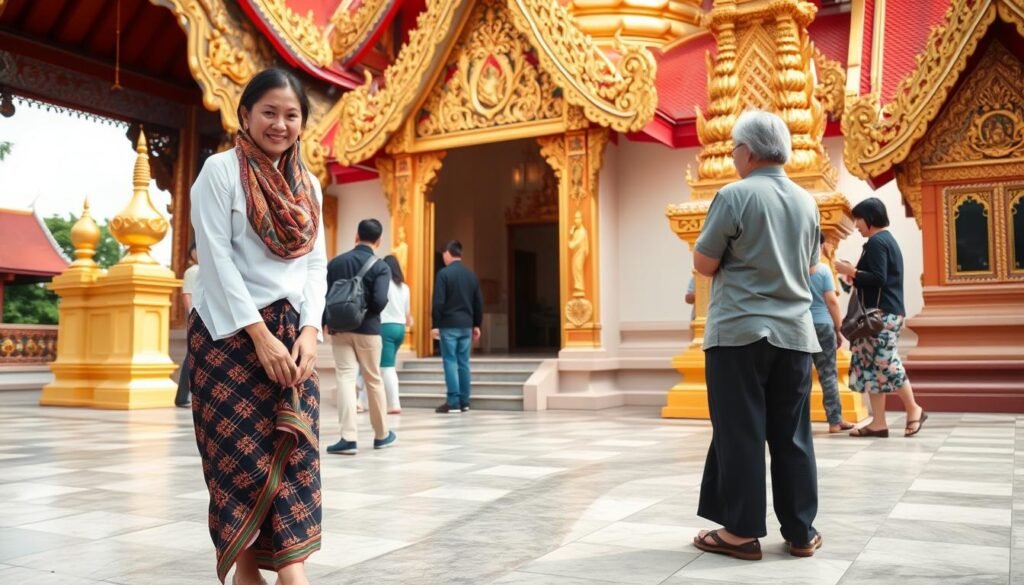
Respecting local dress codes is essential for cultural immersion and safety
Region-Specific Cultural Guidelines
Middle East & North Africa
- Dress modestly with shoulders, chest, and knees covered; in some areas, a headscarf may be necessary
- Avoid physical contact with men, including handshakes in more conservative areas
- Consider booking female guides for more personal insights and access to women-only spaces
- Be aware that in some countries, certain public spaces may be gender-segregated
- Understand that direct eye contact with men may be misinterpreted in some contexts
Southeast Asia
- Remove shoes before entering homes, temples, and some businesses
- Dress modestly when visiting religious sites (covered shoulders and knees)
- Be aware of specific gestures to avoid (pointing with feet in Thailand, touching someone’s head)
- Learn the appropriate greeting for each country (wai in Thailand, sampeah in Cambodia)
- Understand that in some rural areas, solo female travelers may be unusual but are generally respected
Latin America
- Be prepared for more verbal attention than you might experience at home
- Understand that personal space boundaries may be different (closer conversations, more touch)
- Learn basic Spanish phrases to navigate social situations confidently
- Dress according to local norms, which vary significantly between urban and rural areas
- Be aware that punctuality expectations vary by country and context
Clothing Norms and Packing Adaptably
Clothing is often the most visible way we interact with local culture, and dressing appropriately shows respect while also helping you blend in more effectively. Research typical local attire before packing, paying special attention to religious sites or rural areas where expectations may be more conservative. When in doubt, observe what local women your age are wearing and adjust accordingly.
Pack versatile items that can be layered or adjusted for different settings. A lightweight scarf can cover your head for mosque visits, your shoulders for temple tours, or provide sun protection in desert environments. Convertible pants that zip off into shorts offer flexibility for changing environments or cultural contexts.
Consider the message your clothing might unintentionally send in different cultural contexts. Items that are perfectly acceptable at home may have different connotations abroad. This doesn’t mean abandoning your personal style, but rather making thoughtful choices that respect local sensibilities while keeping you comfortable.
Communication and Social Interaction Tips
Understanding how to navigate social interactions across cultures can significantly enhance your travel experience. Learn a few key phrases in the local language—even basic greetings and thank-yous demonstrate respect and often lead to warmer receptions. In many cultures, showing interest in local customs and making an effort with the language opens doors to more authentic experiences.
Be aware of different communication styles, including the role of direct eye contact, physical proximity, and gestures, all of which vary significantly across cultures. In some places, what you don’t say may be as important as what you do say—many cultures value indirect communication to preserve harmony and save face.
Research local perspectives on solo female travelers before you arrive. In some cultures, women traveling alone may be unusual but respected for their independence. In others, locals may express concern or curiosity. Preparing thoughtful responses to common questions about why you’re traveling alone can help navigate these conversations with confidence.
Cultural Respect vs. Personal Safety
While respecting local customs is important, never compromise your personal safety or core values. If a situation feels unsafe or deeply uncomfortable, trust your instincts and remove yourself, regardless of perceived cultural expectations. Cultural sensitivity is about respect and awareness, not placing yourself in vulnerable positions.
Dining Alone Across Cultures
Eating alone can be one of the most challenging aspects of solo travel, particularly in cultures where dining is a deeply social activity. Research local dining customs before you go—in some places, communal tables are common and provide natural opportunities to connect with others. In others, counter seating or café culture makes solo dining completely normalized.
Consider timing your meals strategically. Lunch is often more casual than dinner in many cultures, making it an easier meal to enjoy solo. Early dinners may also be less conspicuous in places where later dining is the social norm. Food tours and cooking classes offer structured ways to enjoy local cuisine while meeting others.
Bring a book, journal, or device if it makes you more comfortable, but also challenge yourself to occasionally dine without distractions. Some of the richest cultural observations happen when you’re fully present, and many cultures appreciate seeing visitors genuinely engaged with their surroundings rather than buried in technology.
Essential Packing List for Solo Female Travelers in 2025
Packing efficiently is both an art and a science, especially for solo female travelers who need to balance preparedness with mobility. When you’re traveling alone, your packing strategy becomes even more important—you’ll be managing your own luggage at all times and won’t have a travel companion to borrow from if you forget something essential. The right gear can enhance your safety, comfort, and overall experience.
Smart packing with security features gives solo travelers peace of mind
Anti-Theft Gear and Security Essentials
Security-focused travel gear has evolved significantly, with innovative products designed specifically for solo travelers. Anti-theft bags now feature cut-resistant materials, RFID blocking pockets, locking zippers, and even alarm systems that can be triggered if your bag is snatched. Look for crossbody styles that can be worn in front of your body in crowded areas.
Portable door locks and door stop alarms provide an extra layer of security in accommodations. These lightweight devices can prevent a door from being opened from the outside, while some models include alarm features that sound if someone attempts to enter. Similarly, portable safe bags allow you to secure valuables to fixed objects in your room.
Consider bringing a dummy wallet containing a small amount of cash and expired cards to hand over in the unlikely event of a robbery. Keep your real valuables distributed in different secure locations, including a hidden money belt or bra pocket for your main credit card and larger cash amounts.
Top Security Gear for 2025
- Pacsafe Citysafe CX Anti-Theft Backpack
- Addalock Portable Door Lock
- Vigilant Personal Alarm with LED Flashlight
- Bra Pocket or Hidden Money Belt
- RFID-Blocking Card Holder
- Portable Safe Bag
Eco-Friendly Travel Essentials
Sustainable travel gear not only reduces your environmental impact but often provides practical benefits for solo travelers. Reusable water bottles with built-in filters allow you to safely drink tap water in many destinations, reducing plastic waste while saving money and reducing the need to find bottled water at night. The latest models include UV purification technology for additional safety.
Solid toiletries like shampoo bars, conditioner bars, and solid perfumes minimize liquids in your luggage, reducing weight and eliminating the risk of spills. Many eco-friendly toiletry brands now offer travel-sized solid options specifically designed for travelers, often in security-friendly packaging that won’t raise questions at airport checkpoints.
Consider packing versatile, high-quality clothing made from sustainable materials like merino wool, which regulates temperature, resists odors, and can be worn multiple times between washes. This allows you to pack lighter while maintaining a fresh appearance. Look for pieces that can be styled different ways to create multiple outfits from minimal items.
Tech Essentials for Solo Female Travelers
Technology can significantly enhance both safety and convenience for solo travelers. A reliable smartphone serves as your map, translator, emergency contact device, and camera all in one. Consider bringing an unlocked phone that can accept local SIM cards for affordable data access, or invest in an international eSIM for seamless connectivity across borders.
Portable power is non-negotiable—a high-capacity power bank ensures your devices stay charged even during long travel days or power outages. Some newer models include built-in cables, wireless charging capabilities, and even AC outlets for charging larger devices like laptops.
A compact tripod with a smartphone mount allows you to capture photos of yourself without asking strangers to take them. Models with flexible legs can be attached to various surfaces, while some include remote controls for discreet operation. This simple tool helps you document your solo journey while maintaining awareness of your surroundings.
Tech Packing Checklist
- Unlocked smartphone with international capability
- High-capacity power bank (20,000+ mAh)
- Universal travel adapter with USB ports
- Compact tripod with remote control
- Noise-canceling earbuds for flights and noisy environments
- Backup phone or communication device
Destination-Specific Packing Considerations
While many travel essentials are universal, certain items become particularly important depending on your destination. For conservative countries, pack a lightweight scarf or pashmina that can cover your head, shoulders, or legs as needed. Consider a full-coverage swimsuit or rashguard for destinations where more modest beachwear is appropriate.
For tropical destinations, reef-safe sunscreen and insect repellent are essential, along with lightweight, quick-dry clothing that provides sun protection. A packable sun hat with UPF protection helps prevent sunburn while keeping you cool and comfortable during outdoor exploration.
For colder climates, focus on layering pieces rather than bulky outerwear. Thermal base layers, a packable down jacket, and waterproof outer layers provide versatility without overwhelming your luggage. Merino wool socks and a quality pair of waterproof boots will keep you comfortable while exploring in variable conditions.
Get Your Customized Packing List
Download our interactive packing tool that creates a personalized list based on your destination, season, and travel style—complete with security recommendations for solo female travelers.
Networking & Community Resources for Solo Female Travelers
One of the greatest myths about solo female travel is that it means being alone all the time. In reality, traveling solo often creates more opportunities for meaningful connections than traveling with companions. The key is knowing where and how to find your community on the road. From female-focused accommodations to specialized apps and in-person meetups, there are more ways than ever to connect with like-minded travelers and locals.
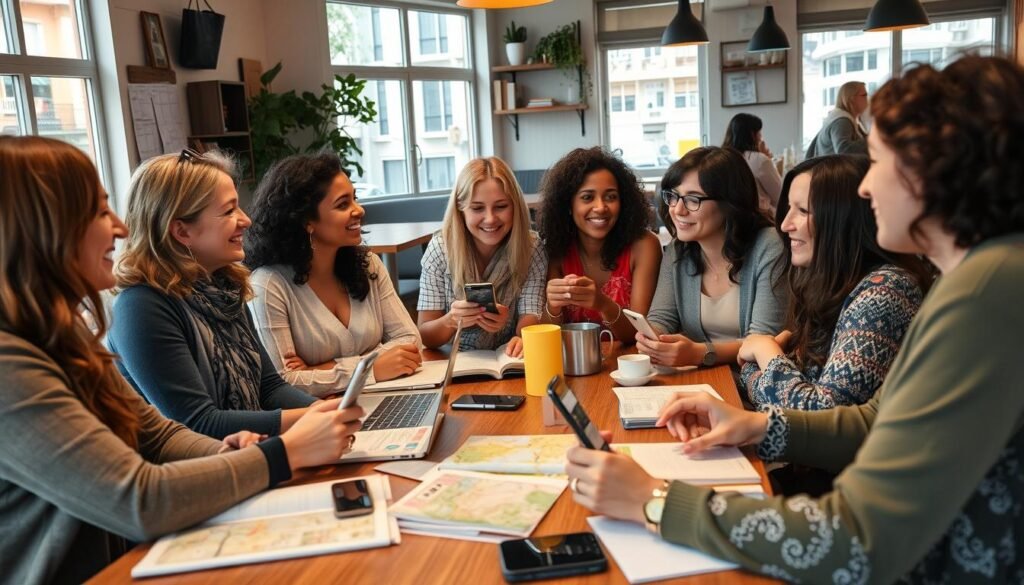
Solo travel communities create opportunities for connection and friendship
Female-Only Accommodations and Experiences
The rise of female-focused travel has led to a boom in accommodations and experiences designed specifically for women traveling alone. Female-only floors in hotels provide enhanced security and privacy, while women-only hostels create safe, supportive environments for meeting other solo travelers. These spaces often include thoughtful amenities like better bathroom lighting, quality hair dryers, and enhanced security features.
Beyond accommodations, women-only retreats and tours have expanded dramatically, offering experiences ranging from wellness weekends to adventure expeditions. Companies like Women Traveling Together and Adventure Women specialize in creating supportive group experiences where solo travelers can enjoy the benefits of companionship without the compromises of traveling with friends or family.
Co-living spaces designed for digital nomads often include female-focused programming and community events, making them excellent options for longer-term solo travelers. These spaces typically offer a blend of private accommodations and communal areas, creating natural opportunities for connection while maintaining personal space.
Apps and Digital Platforms for Solo Female Travelers
Technology has transformed how solo travelers connect, with specialized apps designed to help women find community on the road. Tourlina functions like a dating app for female travel companions, allowing you to match with other women traveling to your destination during the same timeframe. The app verifies users’ identities for added security.
Social platforms like Girls Love Travel (Facebook) and Nomadher (app) create virtual communities where solo female travelers can seek advice, share experiences, and even find meetups in destinations worldwide. These spaces provide both practical information and emotional support from women who understand the unique joys and challenges of traveling alone.
For local connections, apps like Bumble BFF and Meetup help you find friends and events in your destination. Many cities now have regular gatherings specifically for travelers and expats, providing structured opportunities to meet people in a safe, social environment.
Top Community Apps for Solo Female Travelers
- Tourlina – Find verified female travel companions
- Nomadher – Social network and city guides for women
- Fairytrail – Dating app for travelers and remote workers
- Bumble BFF – Friend-finding with women-centric design
- Meetup – Find local events and interest groups
Building Meaningful Connections on the Road
While apps and organized events provide structured ways to meet people, some of the most meaningful connections happen organically when you’re open to spontaneous interaction. Simple strategies like sitting at the bar instead of a table when dining alone, joining free walking tours, or taking classes (cooking, language, dance) create natural opportunities for conversation.
Consider staying in social accommodations for part of your trip, even if you prefer private rooms. Many boutique hostels and guesthouses offer the privacy of hotel rooms with the social atmosphere of hostels, providing the best of both worlds for solo travelers who want to control when and how they interact with others.
Remember that connections don’t have to be lasting friendships to be valuable. A conversation with a local shopkeeper, a day spent exploring with someone from your hostel, or an evening with a tour group can all enrich your travel experience without any pressure for ongoing commitment. Solo travel teaches you to appreciate these fleeting but meaningful human connections.
Safety Considerations for Meeting People
While connecting with others is a wonderful part of solo travel, maintaining awareness of safety is essential when meeting new people. Trust your instincts about new acquaintances, and don’t feel obligated to share personal details like your accommodation address or travel plans. Meeting in public places during daylight hours is always preferable, especially when getting to know someone new.
When using apps to meet others, verify their identity when possible (many platforms now offer verification features), and inform someone you trust about your plans. Share your live location with a friend or family member when meeting new people, and establish a check-in system so someone knows you’re safe.
Remember that it’s always acceptable to change your mind about plans or leave a situation that makes you uncomfortable. Having a pre-planned excuse or “emergency call” strategy can make it easier to exit gracefully if needed. Your safety and comfort should always take priority over politeness or social expectations.
Transportation Safety Hacks for Solo Female Travelers
Getting from place to place safely is one of the most important aspects of solo female travel. Transportation choices affect not just your safety but also your budget, schedule, and overall travel experience. From navigating public transit to choosing accommodations with location in mind, strategic transportation planning can significantly enhance your solo journey.
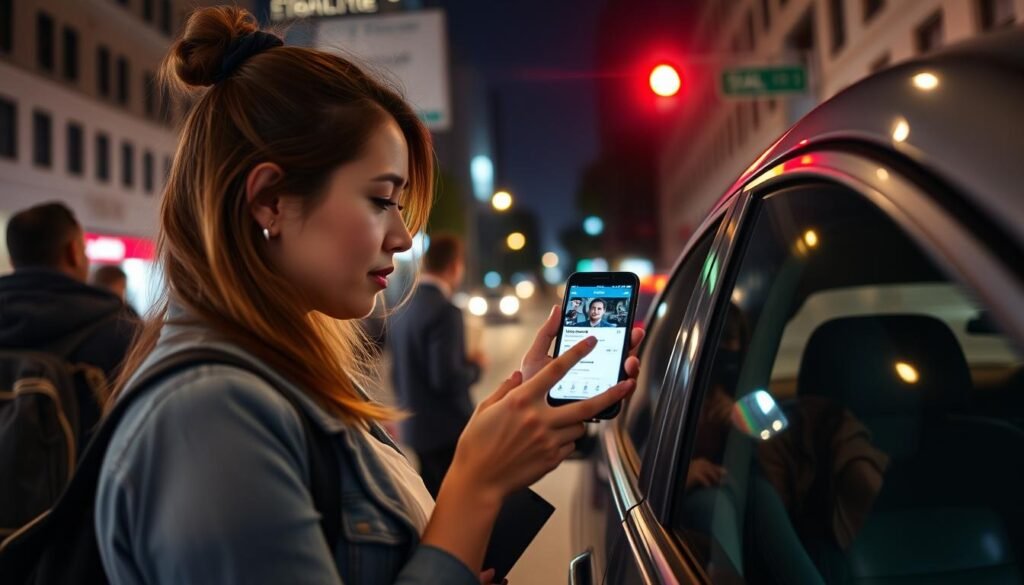
Verifying rideshare details is essential for solo travelers’ safety
Rideshare Safety Strategies
Rideshare services have transformed urban transportation for solo travelers, offering convenience and often greater safety than traditional taxis in many destinations. Always verify the vehicle and driver details before entering the car—check the license plate, car model, and driver’s photo against what’s shown in your app. If anything doesn’t match, cancel the ride and request another.
Use the safety features built into major rideshare apps. Services like Uber and Lyft offer trip sharing, allowing a friend or family member to track your journey in real-time. Some apps now include emergency buttons that connect directly to local authorities. In regions where women’s safety is a particular concern, female-driver options like Safr and Lady Driver are expanding internationally.
When possible, arrange for pickup and dropoff in well-lit, public locations rather than isolated areas. Sit in the back seat rather than next to the driver, and keep your phone accessible throughout the ride. Consider making a brief phone call at the beginning of your journey, mentioning the driver’s name and your destination—this signals to the driver that someone knows your whereabouts.
Night Travel Considerations
Traveling after dark requires additional precautions, particularly in unfamiliar locations. Whenever possible, plan to arrive at new destinations during daylight hours, giving you time to orient yourself and reach your accommodation safely. If night arrival is unavoidable, pre-arrange transportation from your arrival point to your accommodation.
For evening activities, research safe transportation options in advance. In some cities, public transit may be perfectly safe at night, while in others, rideshares or taxis are strongly recommended. Ask local women or accommodation staff for their recommendations—they’ll have the most current, relevant safety information.
Consider the location of your accommodation carefully when booking. Paying slightly more for a centrally located property often saves both money and safety concerns by reducing the need for late-night transportation. Look for accommodations on well-lit streets with 24-hour reception or security.
Night Travel Safety Checklist
- Research safe vs. unsafe areas before going out
- Pre-plan your return route and transportation
- Share your location with a trusted contact
- Keep emergency contacts accessible
- Carry a charged phone and backup battery
- Consider a personal safety alarm
Public Transportation Navigation
Public transportation offers an affordable, sustainable way to explore cities while providing opportunities to observe local life. Research transit systems before arrival, downloading relevant apps and understanding payment methods. Many cities now offer tourist passes that combine unlimited transit with attraction discounts, providing both convenience and savings.
When using public transportation, maintain awareness of your surroundings and belongings. Keep valuables secure and accessible—a crossbody bag worn in front of your body is often the safest option. On buses and trains, sit near the driver or in cars with other passengers, avoiding empty compartments, particularly at night.
Consider using transit apps like Citymapper or Moovit that provide real-time updates and alternative route suggestions. These apps often include safety features like notifications for the last train or bus of the night and walking directions that favor well-lit, busier streets. Google Maps now includes women’s safety ratings for some routes in major cities.
Long-Distance Travel Tips
For journeys between cities or countries, research transportation options with safety, comfort, and budget in mind. In many regions, overnight trains or buses can save both time and accommodation costs, but prioritize reputable companies with good safety records. For overnight journeys, book specific seats or compartments rather than open seating when possible.
When flying, consider factors beyond just price when booking. Direct flights reduce the stress of connections and the risk of being stranded during delays. Morning departures are less likely to experience delays than evening flights. Some airports offer women’s lounges or rest areas, providing secure spaces during long layovers.
For road trips, ensure your vehicle is reliable and equipped with emergency supplies. Share your route and expected arrival times with someone you trust, checking in at predetermined points. Consider using what3words or similar location-sharing apps that can pinpoint your exact location in remote areas where addresses may not be precise.
Health & Wellness Tips for Solo Female Travelers
Maintaining your health while traveling solo requires both preparation and adaptability. Without a travel companion to assist during illness or injury, taking preventative measures becomes even more important. From managing medications to accessing mental health support on the road, a comprehensive approach to wellness ensures you can fully enjoy your solo adventure.
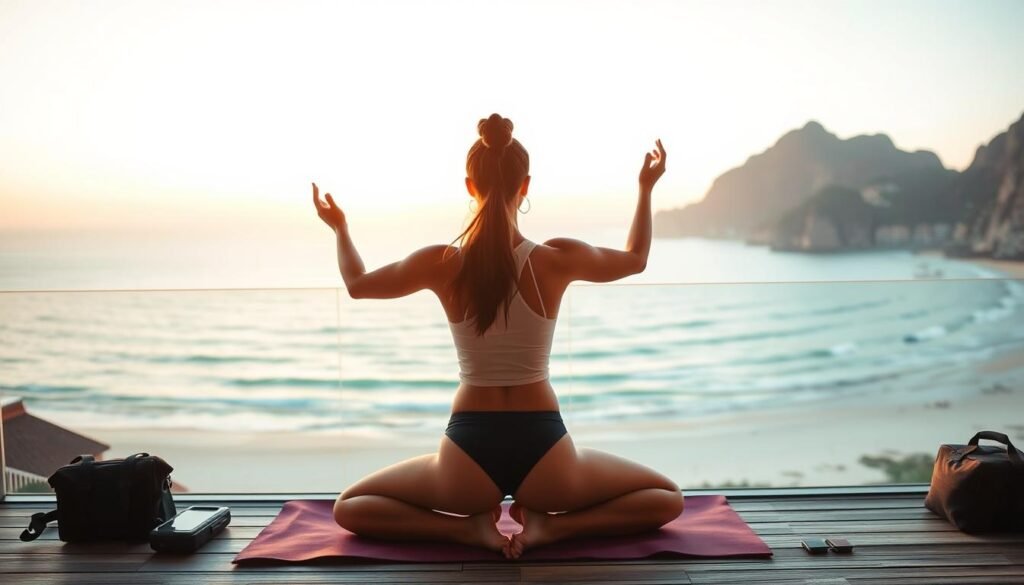
Self-care routines are essential for maintaining wellness during solo travel
Vaccine Updates and Health Preparations
The global health landscape continues to evolve, making pre-trip medical consultation essential. Schedule an appointment with a travel medicine specialist at least 8 weeks before departure to discuss destination-specific vaccines and health risks. For 2025, several new travel vaccines have become available, including improved protection against dengue fever and updated COVID-19 variants.
Beyond vaccines, discuss destination-specific health risks and preventative measures with your healthcare provider. Depending on your destination, you may need antimalarial medication, altitude sickness prevention, or specific antibiotics for traveler’s diarrhea. Ask for prescriptions with generic names that will be recognized internationally.
Assemble a comprehensive travel health kit tailored to your specific needs and destination. Include basic first aid supplies, any prescription medications in their original packaging, and over-the-counter remedies for common travel ailments like digestive issues, allergies, and pain. For remote destinations, consider adding prescription antibiotics and stronger pain relievers after consulting with your doctor.
Managing Women’s Health While Traveling
Women’s health needs require specific planning for comfortable, stress-free travel. If you use menstrual products, research availability at your destination—in many countries, options may be limited or different from what you’re accustomed to. Consider packable alternatives like menstrual cups, period underwear, or reusable cloth pads that reduce both waste and the need to find supplies while traveling.
If you take hormonal contraceptives, ensure you have enough for your entire trip plus extra in case of delays. Some medications require specific storage conditions—check whether your contraceptive needs refrigeration or protection from extreme temperatures. For long-term travel, research options for obtaining refills abroad or consider switching to longer-lasting methods before departure.
Research women’s health resources at your destination before you need them. Save contact information for English-speaking gynecologists or women’s clinics in major cities on your itinerary. International hospital groups like Bumrungrad (Asia) and American Hospital (Middle East) often provide high-quality care with English-speaking staff.
Women’s Health Travel Checklist
- Sufficient supply of hormonal medications
- Preferred menstrual products or alternatives
- UTI prevention supplies and treatment
- Vaginal health products if needed
- Emergency contraception if appropriate
- Contact information for women’s health providers
Mental Health Resources for Solo Travelers
Solo travel can be emotionally intense, with highs of exhilaration and independence sometimes balanced by moments of loneliness or overwhelm. Prepare for this emotional journey by establishing support systems before departure. If you currently work with a therapist, discuss options for virtual sessions while traveling, including any time zone or connectivity considerations.
Several apps now offer on-demand mental health support specifically designed for travelers. Services like BetterHelp and Talkspace provide text and video therapy with licensed professionals, while meditation apps like Calm and Headspace offer tools for managing anxiety and improving sleep in unfamiliar environments. Some travel insurance policies now include telehealth mental health services.
Develop personal strategies for managing stress and maintaining emotional well-being on the road. This might include morning journaling, regular video calls with loved ones, or finding local exercise classes. Remember that it’s normal to have challenging days while traveling—building in rest days and practicing self-compassion are essential parts of sustainable solo travel.
Food and Water Safety
Exploring local cuisine is one of travel’s great pleasures, but food safety requires particular attention when you’re traveling solo. Research common foodborne illnesses in your destination and learn how to identify safe food vendors. Generally, busy establishments with high turnover and local customers are good indicators of food safety.
Water safety varies significantly by destination. In places where tap water isn’t potable, remember that ice, uncooked vegetables, and fruit washed in local water may also pose risks. Water purification options have expanded beyond traditional tablets to include UV purifiers, filtered water bottles, and even straw filters that allow you to safely drink from virtually any water source.
Prepare for the possibility of food-related illness by packing appropriate medications and knowing when to seek medical attention. Mild digestive issues can often be managed with rest, hydration, and over-the-counter remedies, but persistent symptoms, high fever, or bloody stools require professional medical care.
Crisis Management for Solo Female Travelers
Even with careful planning, unexpected situations can arise during solo travel. From lost passports to natural disasters, having a crisis management strategy helps you respond effectively to challenges rather than being overwhelmed by them. Preparation, digital backups, and knowing how to access help can transform a potential crisis into a manageable situation.

Digital document backups provide peace of mind during unexpected situations
Embassy and Consular Services
Your country’s embassy or consulate is your most important resource during serious emergencies abroad. Before departure, register your trip with your government’s travel advisory service (such as the Smart Traveler Enrollment Program for US citizens or the Registration of Canadians Abroad service). This allows the embassy to contact you during emergencies and helps them locate you if family members need to reach you urgently.
Save embassy contact information for each country on your itinerary, including emergency after-hours numbers. Understand what services embassies can and cannot provide—they can issue emergency replacement passports, provide lists of local resources, and assist during major crises, but typically cannot pay for medical care, legal fees, or flights home.
For countries where your nation doesn’t maintain an embassy, identify partner countries that can provide services to your citizens through diplomatic agreements. For example, Canada and Australia have a consular sharing agreement, as do many European Union nations for their citizens.
Digital Backups and Documentation
Digital backups of essential documents provide critical access to information during emergencies. Create secure digital copies of your passport, visa, insurance policy, prescriptions, vaccination records, and credit cards. Store these in multiple secure locations: an encrypted cloud service, a password-protected folder on your device, and sent to a trusted contact at home.
Consider using specialized travel apps like TripIt or Apple’s built-in document scanner to organize your digital documents. Some travel insurance providers now offer secure document storage as part of their services. For added security, some travelers carry an encrypted USB drive with essential documents as a backup that doesn’t require internet access.
Beyond documents, maintain digital and physical copies of emergency contacts, including family members, your doctor, insurance provider, credit card companies (with international collect numbers), and embassy information. Arrange for at least one trusted contact at home to have copies of your itinerary and all essential documents.
Essential Digital Backups
- Passport and visa (all pages)
- Driver’s license and ID cards
- Travel insurance policy with contact numbers
- Prescriptions and medical records
- Vaccination certificates
- Credit/debit cards (front and back)
- Emergency contact information
Financial Emergency Planning
Financial emergencies can derail a trip quickly, making advance planning essential. Establish multiple ways to access funds, including at least two different credit cards from different networks (Visa, Mastercard, etc.) stored separately, a debit card for ATM access, and a modest amount of US dollars or euros that are widely accepted in emergencies.
Research your bank’s global partners and locations before departure to identify ATMs with lower fees or partner banks where you can make fee-free withdrawals. Set up online banking with international access and ensure your financial institutions know your travel dates and destinations to prevent fraud holds on your accounts.
Establish a plan for emergency fund transfers if needed. Services like Wise and Western Union operate globally, while many banks offer wire transfer services. Ensure a trusted person at home has the necessary account information and authorization to send funds if required. Some travel insurance policies include emergency cash advances as part of their services.
Natural Disasters and Political Unrest
While rare, natural disasters and political instability can create serious challenges for travelers. Research potential natural hazards in your destination, such as earthquake zones, hurricane seasons, or flood-prone areas. Understand basic safety protocols for relevant disasters and identify emergency shelters near your accommodations.
Stay informed about political conditions through your country’s travel advisories and local English-language news sources. In regions with potential instability, maintain a higher awareness of your surroundings and have contingency plans for rapid departure if necessary. Some travelers maintain a “go bag” with essentials that would allow them to evacuate quickly if needed.
Consider purchasing travel insurance that specifically covers evacuation due to natural disasters or political unrest. Standard policies may exclude these events, so read the fine print carefully. Premium services like Global Rescue and International SOS offer comprehensive evacuation services beyond what typical travel insurance provides.
Be Prepared for Anything
Download our Crisis Management Toolkit with emergency templates, contact cards, and step-by-step protocols for handling common travel emergencies.
Sustainable Solo Female Travel Practices
As awareness of tourism’s environmental and social impacts grows, sustainable travel practices have become essential considerations for conscious travelers. Solo female travelers are uniquely positioned to make positive contributions to the places they visit, often having more flexibility to choose ethical options and engage meaningfully with local communities. Integrating sustainability into your travel approach enhances not only the destinations you visit but also the depth and authenticity of your own experience.
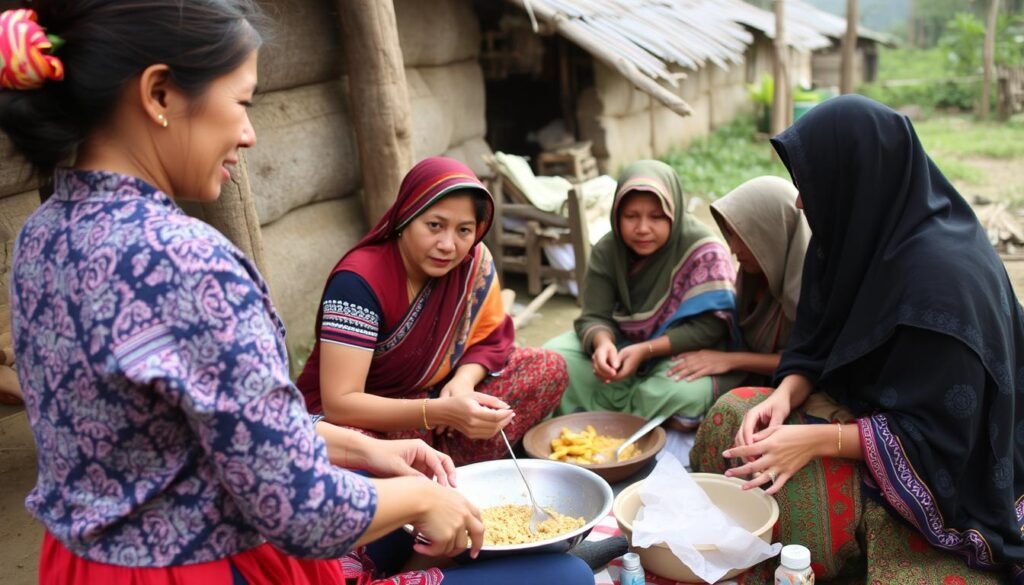
Community-based tourism creates meaningful cultural exchange and economic benefits
Environmental Impact Reduction
Solo travelers have significant control over their environmental footprint, from transportation choices to daily habits. Consider starting with your biggest impact area—transportation. When possible, choose direct flights to reduce emissions, and offset your carbon footprint through verified programs like Gold Standard or Climate Action Reserve. Within destinations, prioritize public transportation, walking, cycling, or shared rides over private vehicles.
Accommodation choices significantly affect your environmental impact. Seek out properties with recognized sustainability certifications like Green Key, LEED, or EarthCheck. Many eco-conscious properties now offer specific programs for solo travelers, including shared airport transfers, communal dining options, and single rooms with reduced resource usage.
Daily habits matter too. Carry reusable essentials like a water bottle, coffee cup, utensils, and shopping bag to minimize single-use plastic. Consider a filtered water bottle that allows you to safely drink tap water in more destinations. Choose reef-safe sunscreen and biodegradable personal care products, particularly in sensitive marine and freshwater environments.
Supporting Women-Owned Businesses
As a solo female traveler, seeking out women-owned businesses creates a network of support while directly contributing to gender equality in the destinations you visit. Research women-owned accommodations, restaurants, tour companies, and shops before your trip. Resources like Women Owned Travel Directory and Female Foodie provide curated listings in many destinations.
Consider booking experiences that specifically support women’s economic empowerment. Organizations like Women in Travel CIC connect travelers with women-led tourism initiatives worldwide, while tour companies like Intrepid Travel offer women-only departures that engage exclusively with women-run businesses and social enterprises.
Look for opportunities to learn directly from local women artisans and entrepreneurs. Many destinations now offer workshops, cooking classes, and cultural experiences led by women who share their traditional knowledge and contemporary innovations. These exchanges often create more meaningful souvenirs and memories than conventional shopping.
Resources for Finding Women-Owned Businesses
- Women Owned Travel Directory
- Female Foodie city guides
- Wanderful’s homesharing network
- Women in Travel CIC experiences
- Intrepid Travel’s Women’s Expeditions
Ethical Photography and Social Media
As solo travelers increasingly document their journeys on social media, ethical considerations around photography and representation become important. Always ask permission before photographing people, especially in cultures where photography may have specific sensitivities. Learn and respect local attitudes about photography in religious sites, ceremonies, or private spaces.
Consider the narrative you create about destinations through your social sharing. Avoid perpetuating stereotypes or presenting simplified versions of complex places and cultures. When sharing challenges or difficulties, balance these with context and nuance rather than broad generalizations. Remember that your perspective as a visitor is inherently limited and acknowledge this in your sharing.
Use your platform, however small, to highlight local initiatives, sustainable businesses, and authentic cultural experiences that might benefit from additional visibility. Consider how your content might influence others’ travel choices and aim to promote responsible practices. The collective impact of thoughtful travel content can shift industry norms toward more sustainable approaches.
Slow Travel and Cultural Immersion
The slow travel movement encourages deeper, more meaningful engagement with fewer destinations—an approach particularly well-suited to solo female travelers seeking authentic connections. By spending more time in fewer places, you reduce your transportation emissions while developing richer understanding of local cultures and communities.
Consider incorporating volunteer opportunities or skill-sharing into longer stays, but research these carefully to ensure they create genuine positive impact rather than displacing local workers or creating dependency. Organizations like Grassroots Volunteering connect travelers with community-based initiatives that welcome short-term contributors in appropriate roles.
Seek out homestays, community-based tourism initiatives, and locally-guided experiences that provide direct economic benefits to residents while offering you more authentic insights. Learning even basic phrases in the local language demonstrates respect and opens doors to interactions that might otherwise remain closed to tourists.
Frequently Asked Questions About Solo Female Travel
Is solo female travel safe in 2025?
Yes, solo female travel can be very safe in 2025 with proper preparation and awareness. Safety varies by destination, but advances in technology, growing communities of solo female travelers, and increased industry focus on women’s safety have made solo travel more accessible than ever. Research your specific destinations, take common-sense precautions, and trust your instincts.
What are the safest countries for solo female travelers in 2025?
The safest countries consistently include Iceland, New Zealand, Canada, Japan, Portugal, Singapore, Switzerland, Norway, and Slovenia. These destinations combine low crime rates, good infrastructure, reliable public transportation, and cultures generally respectful toward women. However, safety is relative—many other countries can be perfectly safe with proper research and precautions.
How do I overcome the fear of traveling alone as a woman?
Start small with day trips or weekend getaways in familiar environments to build confidence. Connect with communities of solo female travelers online for support and advice. Prepare thoroughly to reduce anxiety about logistics. Remember that most fears are based on the unknown—the more you travel solo, the more your confidence will grow as you develop real-world skills and experiences.
How can I meet other travelers when I’m traveling alone?
Stay in social accommodations like hostels or guesthouses with communal spaces. Join group activities such as walking tours, cooking classes, or day trips. Use apps like Tourlina, Bumble BFF, or Meetup to connect with other travelers or locals. Participate in events at coworking spaces if you’re working remotely. Simply being open to conversation in cafes, on transportation, or at attractions often leads to natural connections.
What should I do if I feel unsafe in a situation while traveling solo?
Trust your instincts and remove yourself from the situation immediately. Move to a public place with other people. Don’t worry about appearing rude or overreacting—your safety comes first. Contact local authorities if necessary, or reach out to your accommodation staff for assistance. Use safety apps to alert emergency contacts if needed. Remember that it’s always better to be cautious than to ignore warning signs.
How do I handle dining alone as a solo female traveler?
Embrace the experience of dining solo by bringing a book, journal, or device if it makes you more comfortable. Sit at the bar or counter for a more social experience and easier conversation with staff or other solo diners. Try lunch for your first solo dining experiences, as it’s typically more casual than dinner. Food tours and cooking classes offer structured ways to enjoy local cuisine while meeting others.
What’s the best way to handle money safely while traveling solo?
Diversify your payment methods with at least two different credit cards, a debit card for ATM access, and some cash in the local currency and US dollars or euros. Use money belts or hidden pouches for larger amounts, keeping only what you need for the day in an accessible wallet. Notify your banks of your travel plans to prevent fraud holds. Consider travel-specific financial services like Wise or Revolut for better exchange rates and security features.
How do I pack efficiently for a solo trip as a woman?
Focus on versatile, mix-and-match clothing in a consistent color palette to maximize outfit combinations. Choose fabrics that resist wrinkles and odors, like merino wool or technical blends. Use packing cubes to organize and compress clothing. Remember that you’ll need to manage your luggage independently, so prioritize mobility—a backpack or wheeled bag you can handle comfortably on stairs and uneven surfaces is essential.
What should I do if I get sick while traveling alone?
Prepare by researching healthcare options at your destination before you need them. Carry a basic medical kit with remedies for common travel ailments. If you become ill, inform your accommodation staff who can often provide local assistance. For more serious issues, contact your travel insurance provider’s 24-hour assistance line for guidance to appropriate medical facilities. Don’t hesitate to seek medical attention early rather than waiting until a condition worsens.
How can I stay connected with family while traveling solo?
Establish a regular check-in schedule that works across time zones. Use messaging apps like WhatsApp or Signal that work over WiFi. Consider sharing your itinerary and live location through apps like Find My Friends or Life360. For remote areas, consider a satellite communication device like Garmin InReach. Balance staying connected with being present in your travel experience—scheduled check-ins often work better than constant availability.
Is it more expensive to travel solo as a woman?
Solo travel can be more expensive in some ways, particularly due to single supplements for accommodations and tours. However, you can mitigate these costs by choosing solo-friendly options like hostels with private rooms, looking for tour companies that waive or reduce single supplements, and having complete control over your spending priorities. Many solo travelers find the freedom to choose when to splurge and when to save actually helps them stay on budget.
How do I handle unwanted attention as a solo female traveler?
Research cultural norms regarding dress and behavior in your destination to minimize unwanted attention. Project confidence through your body language and walking pace. Wear sunglasses to avoid unwanted eye contact if necessary. Have prepared responses that are firm but not confrontational. Move to public areas with other people if you feel uncomfortable. In some cultures, mentioning a husband (real or invented) can be an effective deterrent.
What are the best destinations for first-time solo female travelers?
Ideal first-time destinations include countries with good safety records, efficient public transportation, and widespread English usage. Consider places like Portugal, Japan, New Zealand, Iceland, Singapore, and Canada. Within Europe, cities like Copenhagen, Ljubljana, and Dublin are particularly solo-friendly. Start with destinations that match your comfort level culturally and linguistically before progressing to more challenging locations as your confidence grows.
How do I handle emergencies like lost passports or theft while traveling solo?
Prepare by keeping digital copies of important documents in secure cloud storage and with a trusted contact at home. Report theft to local police immediately and get a police report for insurance claims. For lost passports, contact your country’s nearest embassy or consulate—having digital copies will expedite replacement. Comprehensive travel insurance is essential for covering emergency expenses and providing 24/7 assistance services during any crisis.
What’s the best way to document my solo travels?
Combine digital and analog methods that work for your style. A travel journal captures thoughts and experiences that photos might miss. For photography, a compact tripod with a smartphone remote allows you to capture images of yourself without asking strangers. Consider creating private digital albums to share with close friends and family, separate from public social media. Voice memos can capture sounds, conversations, and immediate impressions that bring memories to life later.
Embrace Your Solo Journey
Solo female travel offers a unique blend of freedom, self-discovery, and global connection that simply can’t be replicated in any other experience. As we’ve explored throughout this guide, traveling alone as a woman in 2025 is not only increasingly accessible but also deeply transformative—an opportunity to discover your own resilience, curiosity, and capacity for joy.
Remember that solo travel isn’t about being fearless; it’s about feeling the fear and going anyway. It’s about trusting yourself to navigate new challenges, celebrate small victories, and create a journey that reflects your unique interests and values. Every woman who travels solo contributes to changing perceptions and creating more space for female independence worldwide.
Whether you’re planning your first solo weekend getaway or your fifteenth international adventure, the world is waiting to meet you—just as you are, on your own terms. Pack your bags, trust your preparation, and step into the extraordinary journey that only begins when you decide to explore the world solo.

